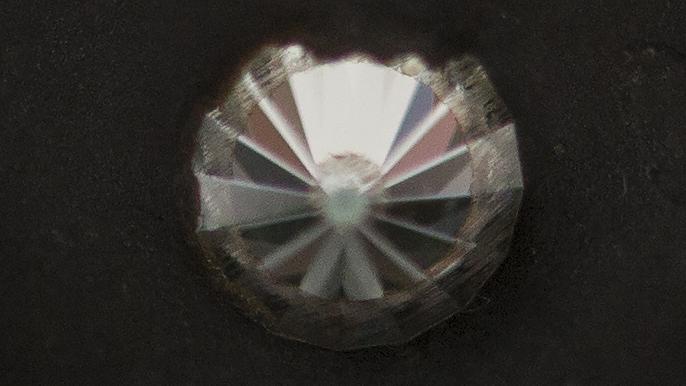
Credit: Jamie Kidston, ANU
The Australian National University (ANU) has led an international project to make a diamond that's predicted to be harder than a jeweller's diamond and useful for cutting through ultra-solid materials on mining sites.
ANU Associate Professor Jodie Bradby said her team – including ANU PhD student Thomas Shiell and experts from RMIT, the University of Sydney and the United States – made nano-sized Lonsdaleite, which is a hexagonal diamond only found in nature at the site of meteorite impacts such as Canyon Diablo in the US.
"This new diamond is not going to be on any engagement rings. You'll more likely find it on a mining site – but I still think that diamonds are a scientist's best friend. Any time you need a super-hard material to cut something, this new diamond has the potential to do it more easily and more quickly," said Dr Bradby from the ANU Research School of Physics and Engineering.
Her research team made the Lonsdaleite in a diamond anvil at 400 degrees Celsius, halving the temperature at which it can be formed in a laboratory.
"The hexagonal structure of this diamond's atoms makes it much harder than regular diamonds, which have a cubic structure. We've been able to make it at the nanoscale and this is exciting because often with these materials 'smaller is stronger'."
Lonsdaleite is named after the famous British pioneering female crystallographer Dame Kathleen Lonsdale, who was the first woman elected as a Fellow to the Royal Society.
The research is published in Scientific Reports.
Co-researcher Professor Dougal McCulloch from RMIT said the collaboration of world-leading experts in the field was essential to the project's success.
"The discovery of the nano-crystalline hexagonal diamond was only made possible by close collaborative ties between leading physicists from Australia and overseas, and the team utilised state-of-the-art instrumentation such as electron microscopes," he said.
Corresponding author from the University of Sydney, Professor David McKenzie, said he was doing the night shift in the United States laboratory as part of the research when he noticed a little shoulder on the side of a peak.
"And it didn't mean all that much until we examined it later on in Melbourne and in Canberra – and we realised that it was something very, very different."
###
Images related to the research are available via this Dropbox link.
You can also watch the video interview with the researchers on the ANU YouTube channel.
FOR INTERVIEW:
Associate Professor Jodie Bradby
ANU Research School of Physics and Engineering
T: +61 2 6125 4916
M: +61 40 227 6767
E: [email protected]
Professor Dougal McCulloch
Director, RMIT Microscopy and Microanalysis Facility
T: +61 3 9925 3391
E: [email protected]
Professor David McKenzie
The Applied and Plasma Physics research group, University of Sydney
T: +61 2 9351 5986
M: +61 413 385 850
E: [email protected]
FOR MEDIA ASSISTANCE:
Will Wright
ANU media team
T: +61 2 6125 7979
M: +61 478 337 740
E: [email protected]
David Glanz
RMIT Senior Manager, Marketing and Communications
T: +61 3 9925 2807
M: +61 438 547 723
E: [email protected]
Vivienne Reiner
University of Sydney media team
T: +61 2 9351 2390
M: +61 438 021 390
E: [email protected]
Media Contact
Jodie Bradby
[email protected]
61-402-276-767
@ANUmedia
http://www.anu.edu.au/media
############
Story Source: Materials provided by Scienmag





